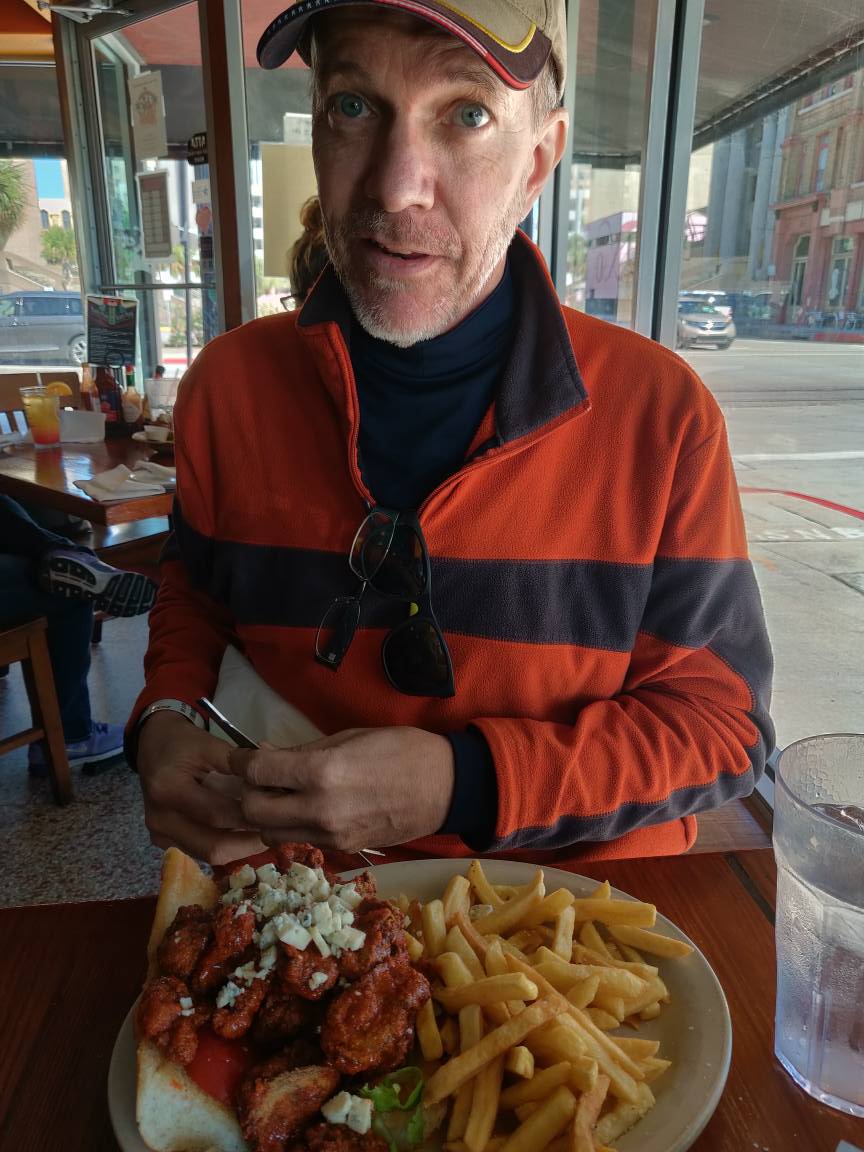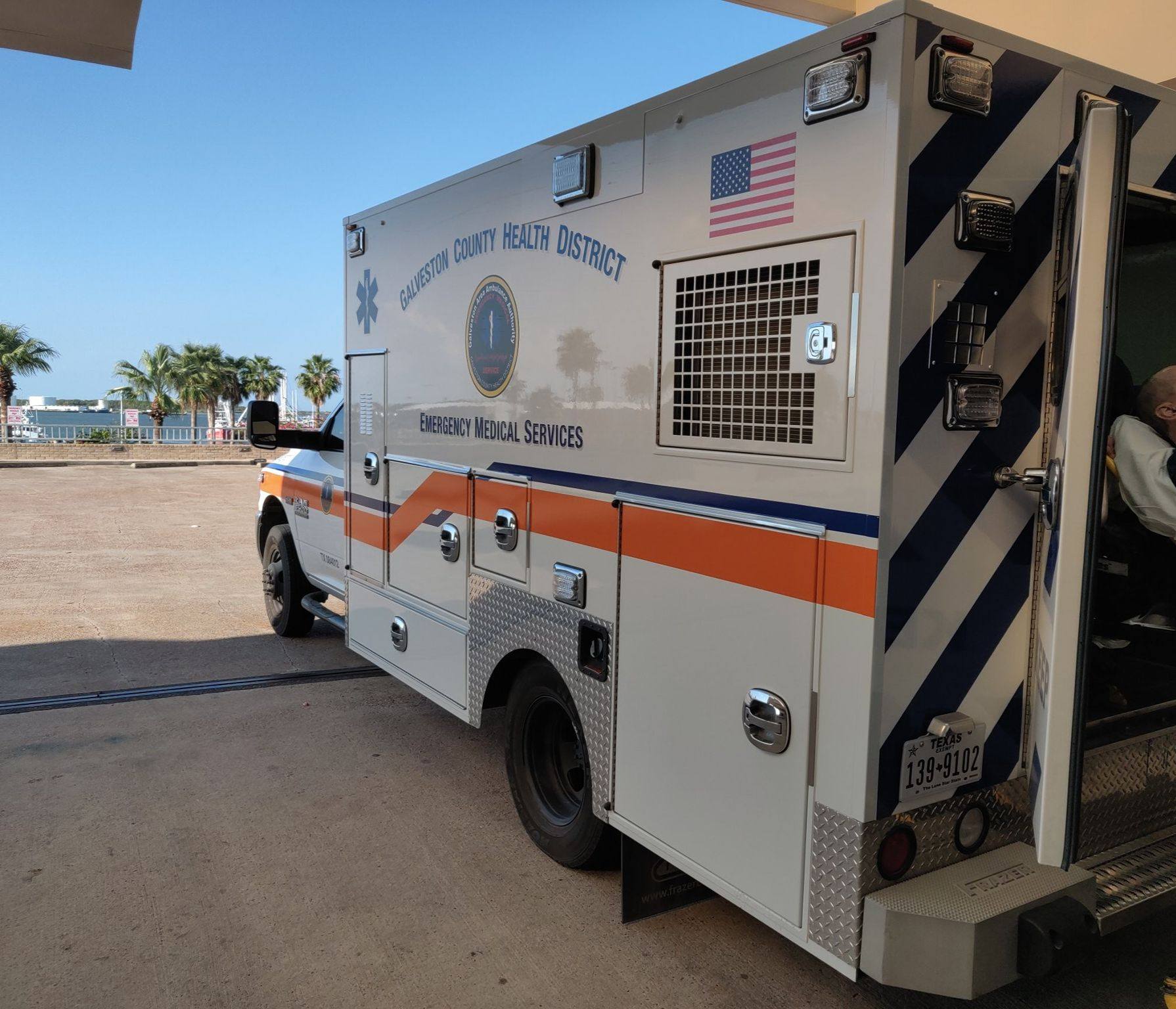Here’s what it means to be broken open by pain. You also get intense moments of gratefulness and joy. Driving into work today, listening to Thank U Next on the radio, and just feeling so grateful for all that I have. Despite it all. Joy.
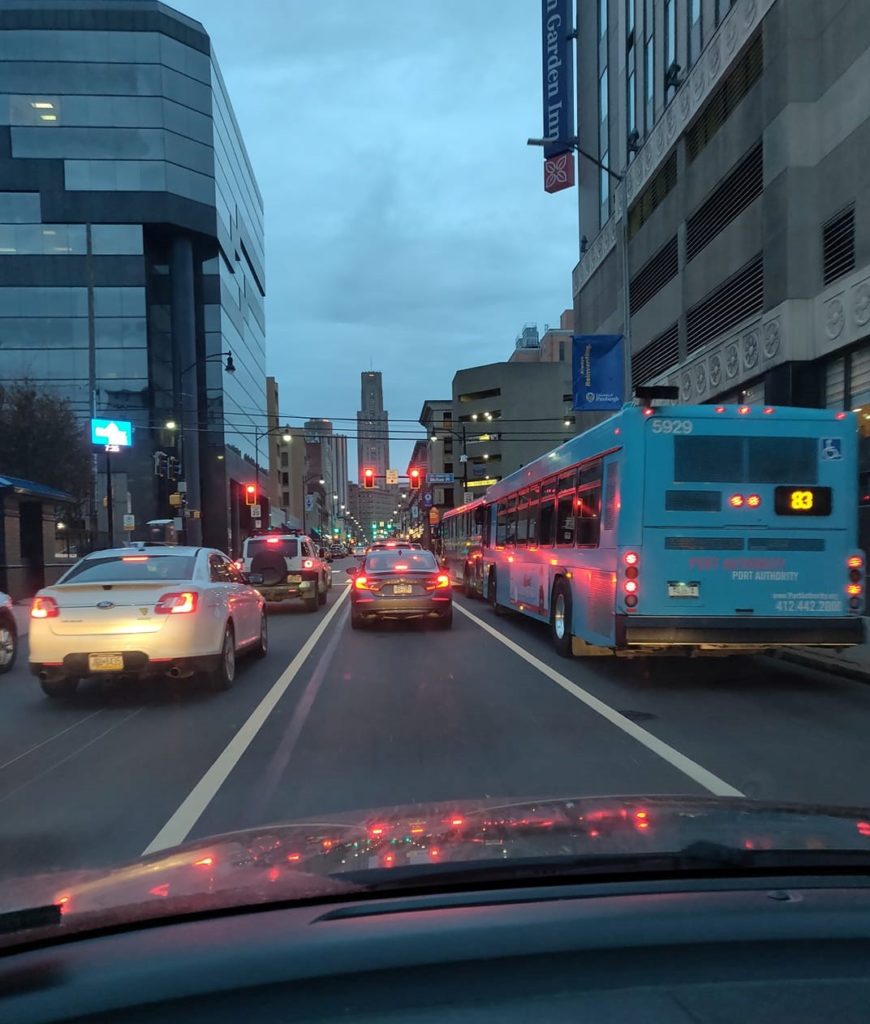
Living and loving life (most days), despite SNUC (Sinonasal Undifferentiated Carcinoma)
Here’s what it means to be broken open by pain. You also get intense moments of gratefulness and joy. Driving into work today, listening to Thank U Next on the radio, and just feeling so grateful for all that I have. Despite it all. Joy.

Well gosh darn it, the route to wellness keeps changing. We thought that surgical resection was possible, and that would be preferrable. Instead, the new team (neurosurgeon, ENT surgeon, and medical oncologist) report that the scans show that the risk benefit ratio doesn’t work out in Mark’s favor to consider surgery at this time. The tumor is too close to the optic nerve and to the carotid artery. That’s a major blood vessels that supplies blood to his head, neck, and face. Kina want to keep that one intact.
So zap the heck out of the tumor it is. Mark’s radiation starts on December 9. Five days per week for six weeks, they will deliver to the tumor the highest dose of radiation that is tolerable using IMRT (Intesity-Modulated Radiation Therapy). They start with creating a mask. Picture a fencing mask filled with tiny holes and made of plastic that can be molded to exactly fit Mark’s head. Every time Mark goes for radiation, Mark will lie on a table and they will put him in the mask, fix the mask onto the table to keep Mark completely immobile, and then roll him into the machine. The radiation machine can deliver radiation the conforms to the shape of the tumor, with the radiation technician watching a realtime scan of Mark’s skull while administering the treatment.
To keep the tumor on it’s toes, Mark will also get the highest dose of chemo possible every three weeks. These chemo treatments will start with a blood test to make sure everything’s going okay, and then fluids to keep his kidneys healthy, and then anti-nausea meds, and then the chemo followed by a chaser of one more bag of fluids.
The side effects are daunting. The chemo brings the usual crapping stuff: nausea, fatigue, loss of taste, poor appetite, and just for some variety, the potential for hearing loss as this chemo drug can accumulate in your ears. The radiation is next level. In no particular order, it can include possible loss of vision, more hearing loss, fatigue, loss of salivary gland function, difficulty swallowing, weight loss, possible feeding tube if he can’t keep up his weight, open wounds in the mouth, tooth decay, bone loss in jaw.
I’ve never climbed a big mountain. I think I’m about to. Mark is embarking on six weeks of truly unimaginable challenge. He needs prayers. We will need support. The former, we know that all you caring, loving friends and family will give. We are grateful for life every day. Mark is fighting. Stay with us.
I love being a science teacher. It was my parents love of family camping trips that immersed me in exploring the natural world. On naturalist walks at national parks, I soaked in the details about parasitic plants found in eastern deciduous forests and constellations gazed at on mountain tops and sea cucumbers discovered in tidal pools.
I love teaching middle school girls. They are funny and curious and intellectually vibrant. Yesterday I was teaching 7th graders about the cell cycle and mitosis. The topic for the day was how this all works and how almost all the time, it goes right. When it doesn’t go right, the cells pass the natural check points and start to divide uncontrollably. That’s what cancer is. They started asking all the “what happens if/when” questions. Someone asked if you lose your sense of smell, can you get it back. If your optic nerves are damaged, can they be repaired? They know that Mark has cancer, because a letter went home when I had to be out for our trip to Texas. I hadn’t talked to them about it though. Yesterday, it fit and so I did. I carefully related their questions about smell and vision to sinus cancer and treatment. Their questions flowed. Why does my aunt with bone cancer have to have oxygen? Do men get breast cancer? My mom had breast cancer at Stage 1. What do the stages mean? Does cancer hurt? Can cancer be cured, or is it always just being managed? What are mets? How does cancer kill you? And this one: if your husband is sick, why are you here? I answered what I could, and we wondered together about the questions for which I didn’t know the answers.
To me, this is the essence of being a good teacher: taking the teachable moments when they come, giving room for questions to be asked, creating a safe community to explore together our world and our lives. It was awesome.
I woke up at 5am to hear Mark watching TV. I held out til 5:45 am before wandering out to the living room. Mark was watching The Facts of Life. I remember all the big 80s hair and shoulder pads and what was actually, on second glance, a very progressive show. Mark looked at me and quoted the theme song from the show: “You take the good, you take the bad, you take them both and then you have the facts of life…”
Then Bobby the caregiver came, and I drove to work in a beautiful first snowfall. The students were so excited that it was hard during class to distract them away from just gazing out the windows. At lunchtime I drove to Oakland and met up with Mark. We met with the ENT surgeon, and I watched as the doc shoved an alarmingly long scope up Marks nose and then watched on the screen as the tumor that is eating our lives whole came into view. At the neurosurgeon appointment, waiting as he was running three hours late, I leaned my head on Mark’s shoulder because I knew that if I did, he would lay his head on mine and fall asleep. Six hours after arriving at the hospital, we drove home. The city lights shined, and we went through a drive-through and ate hot french fries and held hands. He is asleep sitting on the couch next to me. The facts of life, the facts of life.

I’ve joined a number of Facebook groups over the course of this year. You can track my year, and Mark’s health year, by them. In February, I joined one for people with a spouse with a chronic illness. In August, I joined one for people with cancer and their caregivers. Then another, for people with SNUC and their spouses. In October, I joined one for people with epilepsy and their loved ones. I have to say, with all the challenges people write about in all these groups, perhaps the group that expresses the greatest level of stress, anxiety, depression, fear, and hopelessness is the epilepsy group. So I’m sharing a post from there here, as a public service announcement to let yinz know that folks with seizures really, really struggle. They are often lonely and isolated. They’ve lost their jobs, their independence, and their sense of safety in their own bodies. November is epilepsy awareness month. Shout out to all those with seizures. You are fighting a hard battle. I hear you.
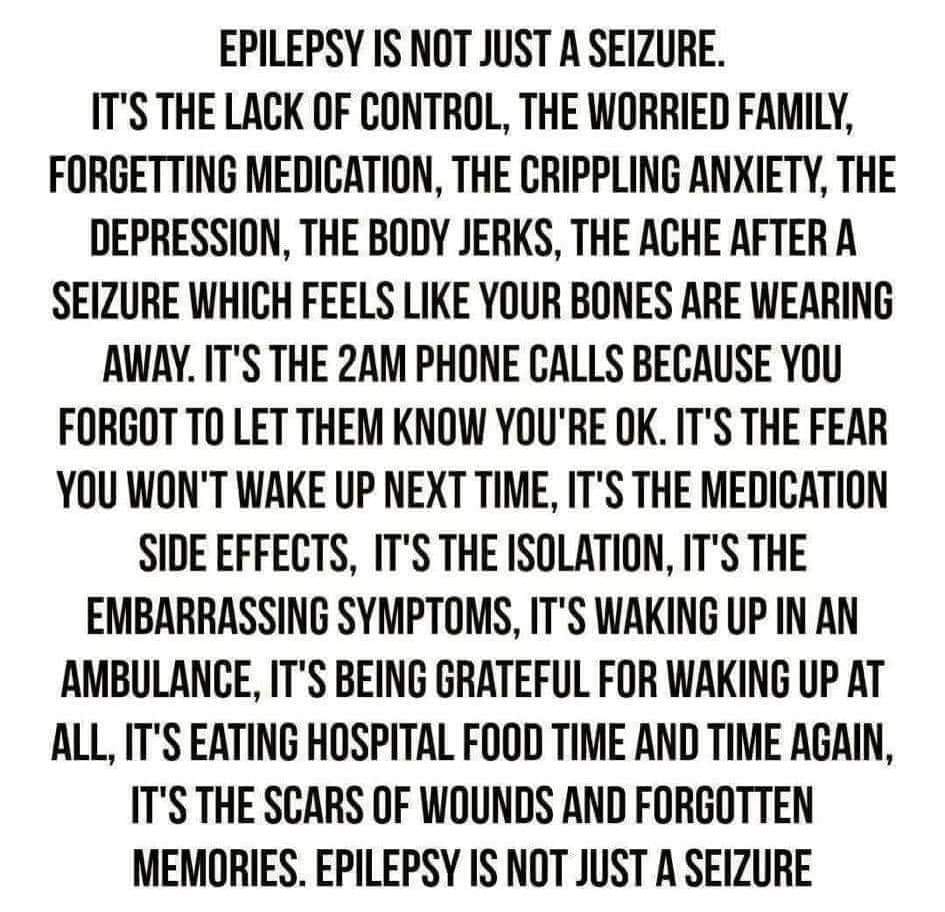
I just spent 45 minutes in the phone queue with Social Security, and then had a 20 minute phone call with them to set up that they will send me a letter letting me know when my phone appt would be to continue filing for benefits on behalf of Mark. Read that a few times again. See why I nap in my car?
1. We are jumping ship from one hospital to another for Mark’s radiation oncology. Zapping his head with radiation just seems like too sensitive of a thing to not go with a team that solely focuses on head and neck cancers. I don’t love the idea of starting over with a new place and new people and systems to learn, but it’s gotta be done.
2. The radiation oncologist doctor talked to their ENT surgeon, who thinks that he may be able to surgically resect the tumor. Stay tuned. Waiting for a phone call from the surgeon.
3. Mark goes to sleep every night by 7 pm. You’d think this would give me some time to myself, but I seem highly capable of filling it with meaningless activities and then falling asleep by 9 pm.
4. Mark’s caregiver was here from 6:30-2 today, and then his friend Kevin came from 2-5:30. This left me a one hour window after work and before I had to be home. A rare hour for me! I used it well. Found a parking spot at the mall and crawled into the back seat and slept. It was great!
Ever onward, D.
I check the Nest cam most mornings, because it’s about the most fun I have on any given day to see either the very fat groundhog waddle up the front steps or the neighborhood cat continuing it’s siege on our chipmunks. Some mornings, I find other entertaining things on the camera. Like this past week, when I found Mark taking out the trash at 2:25 am. Now as much as I appreciate the desire to help, it’s not exactly optimal to have Mark up and outside in the middle of the night. Or inside. But nightly, he gets up because he can’t sleep. He makes himself a pot of coffee (I am now hiding anything other than decaf), does some chores (popping a balloon at 5 am on Friday morning was not a high point for me), naps on the couch, and just sits and lets time pass. (Not being helped by his middle of the night pot of coffee.) Remember what it was like to have a toddler that got up in the night, after you gave them a big kid bed? Imagine that, but with someone who can turn on the stove. I’ve taken to getting up when I hear him get up, and following him to the living room. I can say with confidence that the couch is not as comfortable as our bed. I don’t want to be up at 2 am. My advice for today, not that you asked: tell anyone who you know who’s been a caregiver that they are amazing. Ask anyone you know who’s being a caregiver how you can help them. They will probably say they’re fine. They are lying. They may be lying to themselves, too. They may be too exhausted and numb to know the difference between fine and not fine. It’s a hard gig. We don’t sign up for it. We find ourselves in it. We cope. We do our best. We are dog tired. I had no idea.
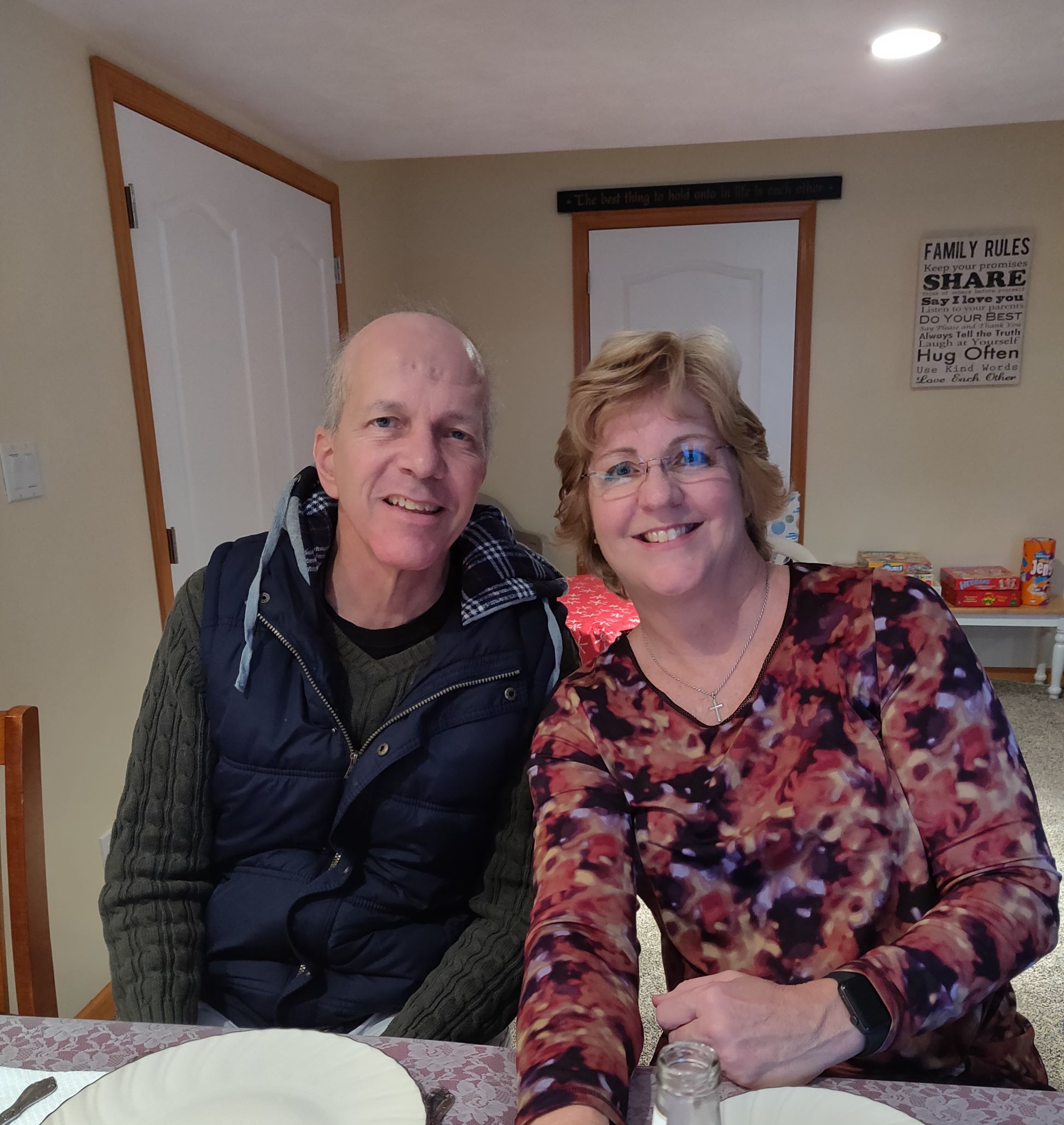
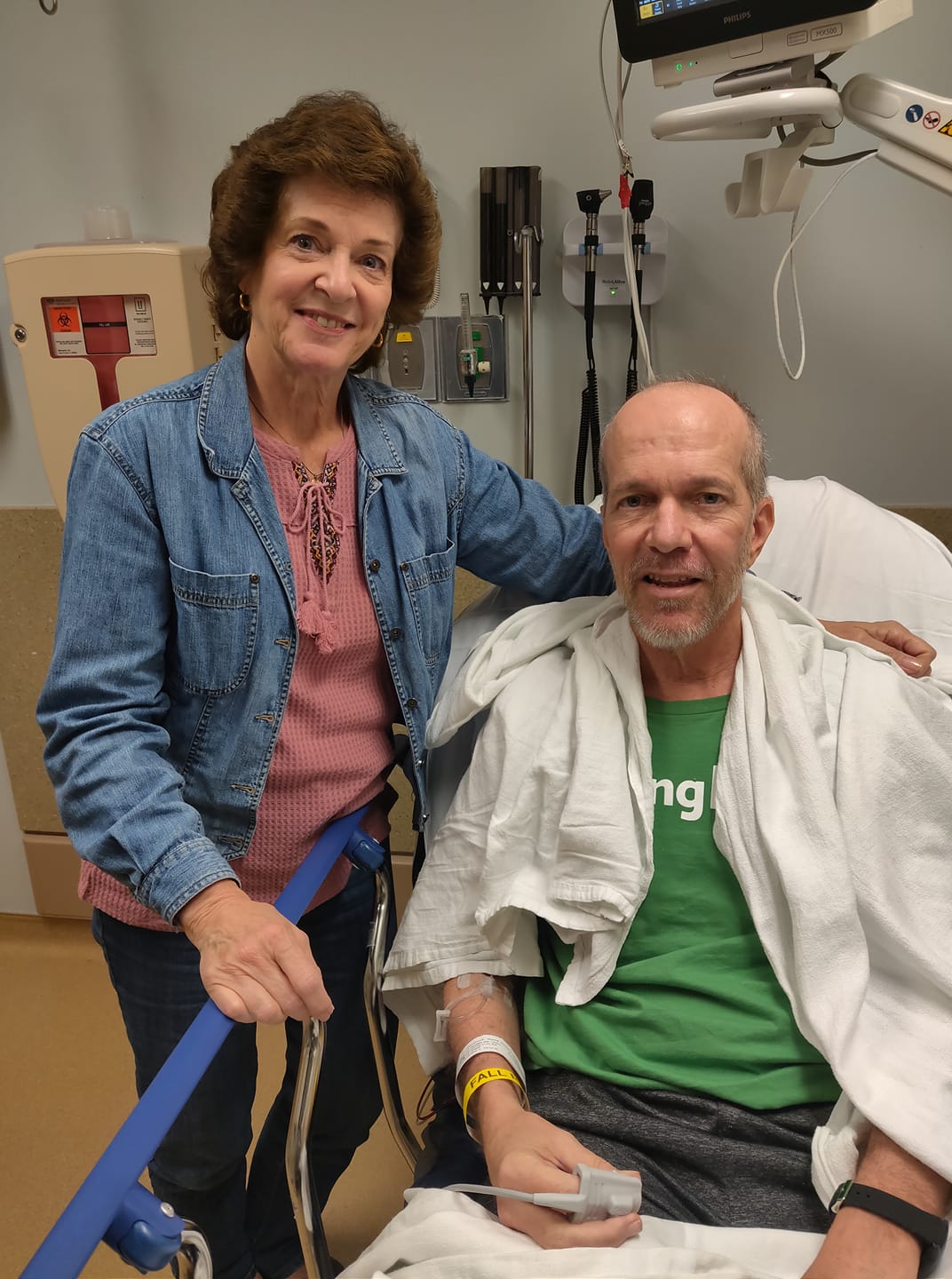
It’s too early in the morning, or maybe too late at night. I’m awake, thinking of too many things. It’s been a good trip, with very little to show for it so far. In MD Anderson, Mark flew through a blur of appts with an ENT surgeon, oral oncologist, medical oncologist, and radiation oncologist. He was probed and tests: CT, PET, MRI, X-ray, nasal probe and blood work. We don’t have any results yet. The tumor board meets on Thursday night, and we’ll get a call after that. The docs will give us their prognosis and next steps for developing a treatment protocol. We’ll then have to decide if we uproot our lives and consider treatment at MD Anderson or some other major hospital, or stay put at home and get treatment there.
Mark’s appointments spanned two weeks, and so we took off on Friday night to head to Galveston. Mark was very tired. We stopped for lunch in the historic distric, went into a used bookstore, and then found our Airbnb, climbed the stairs to the second floor unit, and crashed for naps.
The next morning, Mark had another seizure. I keep my eye on him all the time, to the point of my own exhaustion, because I am afraid of so many things. He’ll be confused and disoriented. He’ll trip and fall. He’ll get lost. But I convinced myself to give myself a little break. Mark was asleep on the couch, and I propped open the door to the deck and sat outside in the sun to read. Within 10 minutes, I heard a crash. I ran in to find Mark flat on his back, unconscious on the hardwood floor. I grabbed my phone and called 911. “What’s your address, m’am?” the dispatcher calmly asked. “Can’t you trace my call from my phone?” I asked. I had no idea what the address of the house was, as I had just plugged it into GPS and followed the nice voice that led me here. “No, we can’t trace cell phones with that kind of accuracy.” Note to self. I had to leave Mark, run down the stairs and out to the sidewalk to look at the address on the house, and then run back upstairs.
That’s the third seizure in one week. These movie-scene kind of seizures are not my favorite. Accolades to the Galveston fire department and EMS, who got to us very quickly. I can report that the ER at University of Texas is more chill than our trauma hospital back home. Their neurologist said the CT scan looked okay, and added another med and sent us on our way. Mark slept most of the next day, and he was in a fairly confused state for a while. He doesn’t remember any of it. (I do. Again, not a fan.) He’s back to a more normal baseline now, thankfully.
Now we’re back in Houston at MD Anderson. Mark had one final appt today. It’s strange to be in the MD Anderson orbit. Everyone here has cancer, or is worried about someone who has cancer. It’s both a comfort somehow, and a little too much. We rode the hotel elevator four times yesterday, and each time a stranger made some small talk with a lot of (correct) assumptions. “When’s your call time tomorrow?” = I know one of you has cancer and you’re headed to the hospital tomorrow. Last Thursday night, we whooped it up (okay, they were really fun people) in the hotel bar with a couple from Louisiana who were back for an annual scan. The subtext to all conversations with everyone from Lyft drivers to hotel restaurant staff is I know you’re worried, I get it, I’ve been there, life is throwing a curve, let’s be kind to each other and try to make the best of today.
Speaking of making the best of today, my dear brother Scott and wife Karen and doggo Molly drove from Dallas to Galveston on Sunday to visit with us. A generous thing to do, as it’s 5 hours away and they were only with us for 24 hours. Even more generous in that Scott had emergency surgery on his leg on Friday morning after smooshing it in a motorcycle accident. (As they say, the motorcycle won.) Family. So great.
Will it be good to be home? Yes. Not restful week though. Mark has his gigantic 8 hour chemo day followed by two days of chemo at 3 hours each. Also being squeezed in there is a neuropsych appt. And of course, waiting to hear the MD Anderson news.
I’m going to make myself a cup of coffee.
Ever onward,
Diane
